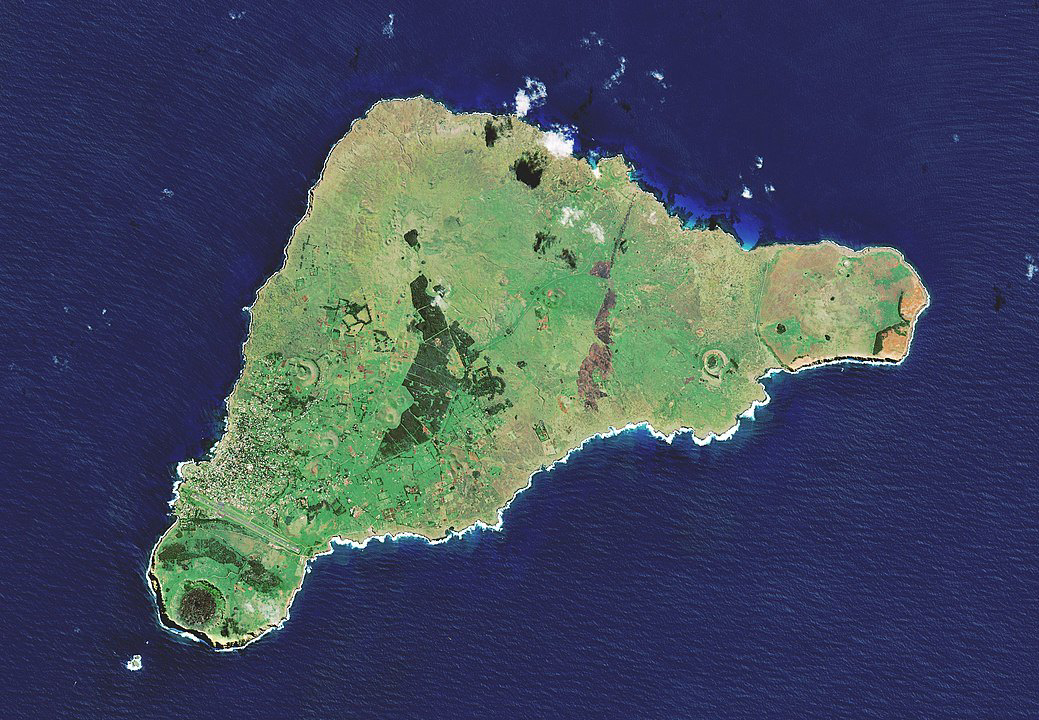
Satellite view of Easter Island 2019. The Poike peninsula is on the right.
Image Credit: en.wikipedia.org
There are numerous things in our world that excites us with their mysterious aspects, Easter Island is one of them. It is one of the world's most isolated inhabited islands. This one unique island hides a lot of mysteries related to its natives and other massive monuments.
Easter Island covers roughly 64 square miles in the South Pacific Ocean and is located some 2,300 miles from Chile’s west coast and 2,500 miles east of Tahiti. Their other inhabited neighbours are the Juan Fernandez Islands to the east. The island was titled as Easter Island, by Dutch explorer Jacob Roggeveen, who explored it on Easter Sunday (5 April) in 1722, while searching for Davis Island. It is known as Rapa Nui to its earliest inhabitants, the current Polynesian name of the island, “Rapa Nui” (Big Rapa), was coined after the slave raids of the early 1860s. Today, Easter Island is served by Mataveri International Airport, with jet services from Latam, Chile and, seasonally, subsidiaries such as Latam, Peru.
Easter Island’s most impressive aspect of its worldwide fame is a formation of almost 1000 humongous monuments that date back many centuries. These sculptures are called as ‘Moai’. The moais were built in approximately 1400 - 1650 A.D. by the natives of this island also known as ‘Rapa Nui’. Many people think that there are just heads of these monuments. But this is a misconception from having seen photos of statues covered up with soil on the internet. Truth is that all of these "heads" have “full bodies”.
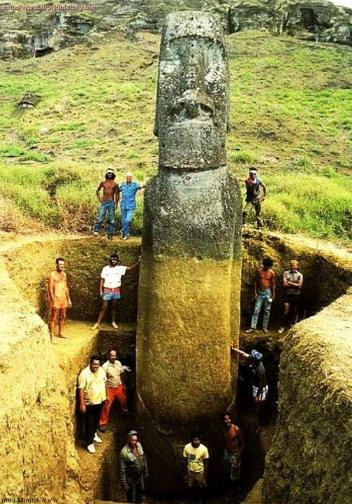
Image Credit: worldhistory.biz
There are around 1000 statues, up to 86 tons in weight and 10 m in height, though average is around half of that. Most of the moais were carved from the volcano Rano Raraku. This specific area was chosen since it consists to a great extent of ‘tuff’, which is what the moais from this volcano consists of. Tuff is constricted volcanic ash and is easy to carve, which was necessary since the natives had no metal to carve with, but used only stone tools, called Toki.
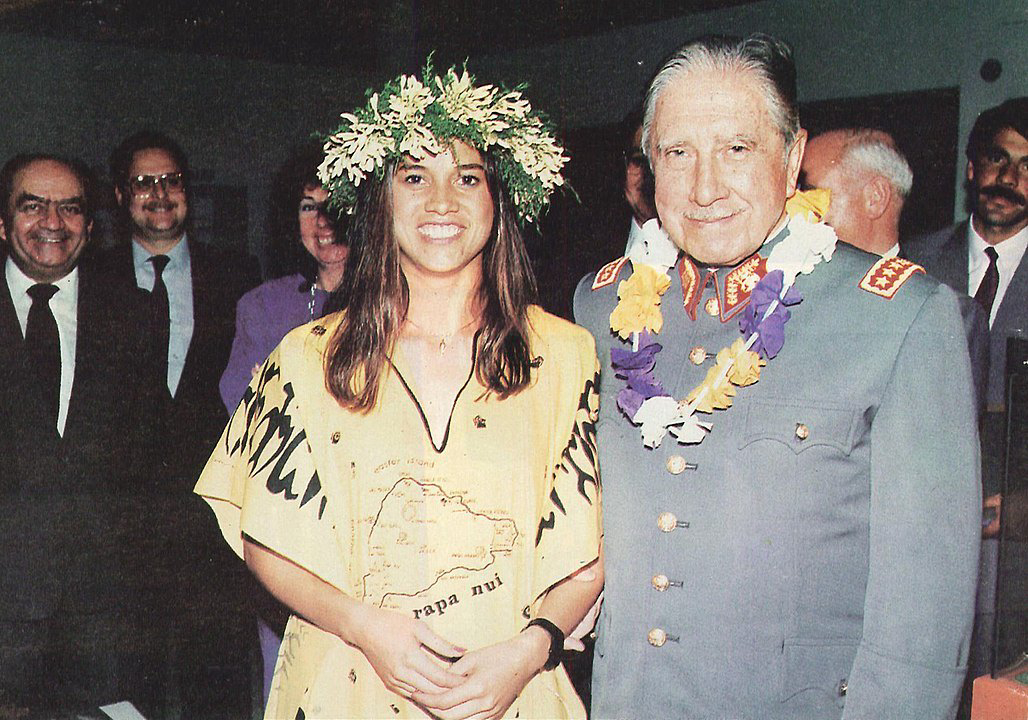
General Pinochet posing with a young Rapa Nui woman
Image Credit: en.wikipedia.org
These huge statues were built to honour chiefs and other important people who had passed away. They were placed on rectangular stone platforms called ‘Ahu’, which are tombs for the people that the statues represented. The sculptures were purposely made with distinct characteristics since they were aspired to keep the appearance of the person it symbolized.
There was one group of carvers from which the statues were bought. Since a larger statue would mean a higher cost, bigger statues would also mean more greatness for the tribe, it would be a proof that the tribesmen are clever and hard-working enough to pay. According to the legends of Rapa Nui, the hats of the monuments actually represent topknots hair, tied up like a ball on top of the head, called pukao in Rapa Nui. The mana (supernatural powers of Rapa Nui legends) was preserved in the hair, which is why chiefs never cut their hair. The spirit of a tribe member who had passed away would forever watch over the tribe and bring a fortune in life through the monuments. This is why the statues are called “Moai - so that he can exist.”
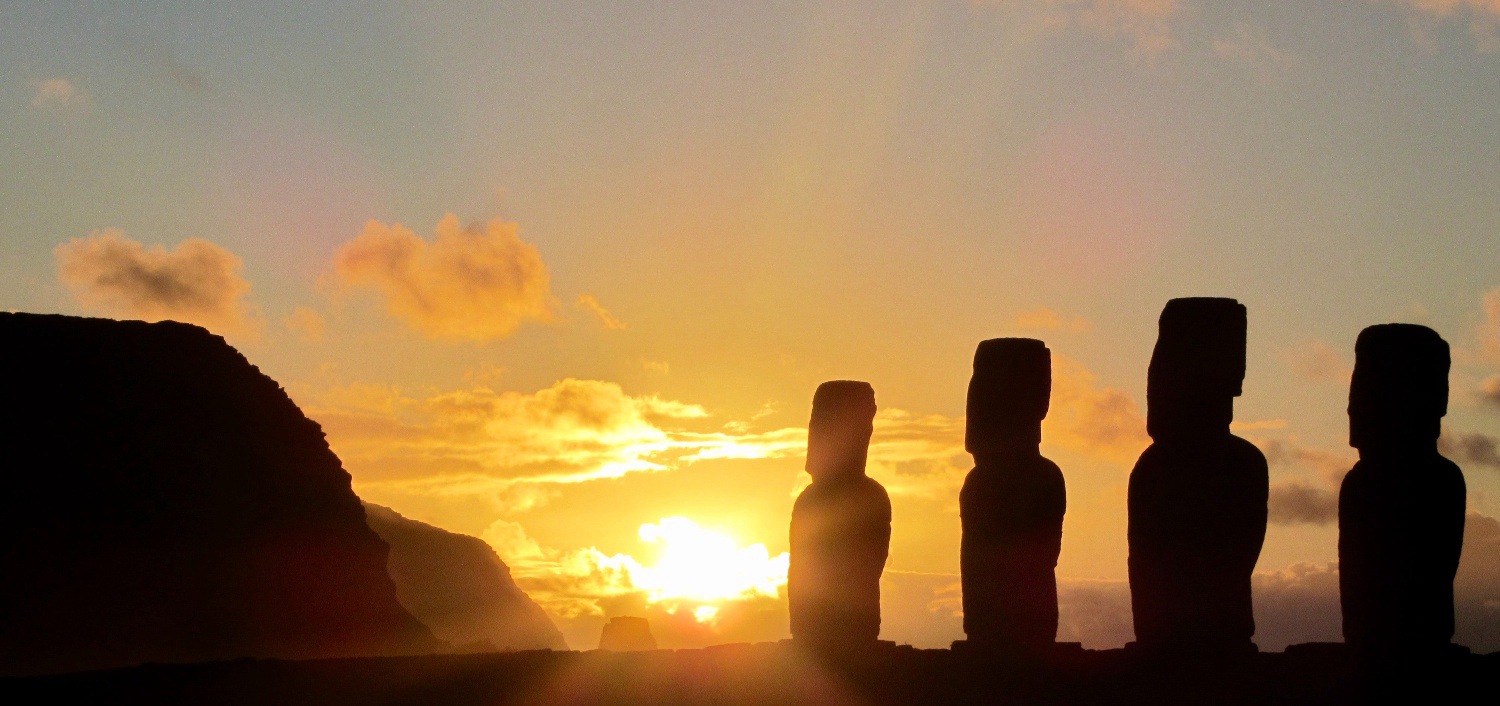
Image Credit: unsplash.com
Another mystery of this island is how stone-age tribes could succeed in transporting these extremely heavy and huge moai statues kilometres across hilly landscapes. There are many moai statues that fell during transportation to their Ahu. Some of these are on their stomach and some on their back. The most widely acknowledged theory is that the sculptures were standing on some kind of construction that would keep the statue standing, which would roll on logs. But according to the oral tradition of Rapa Nui, the moai statues walked to their destination. A literal interpretation of this legend would be that the statues were rocked from side to side. Another theory claims that the extra-terrestrials made the moai statues, and it is a quite common belief. Though, according to oral legends, the Rapa Nui people made the statues. Thus, there has been much theory about the actual meaning of the statues and the way they may have been created and transported.
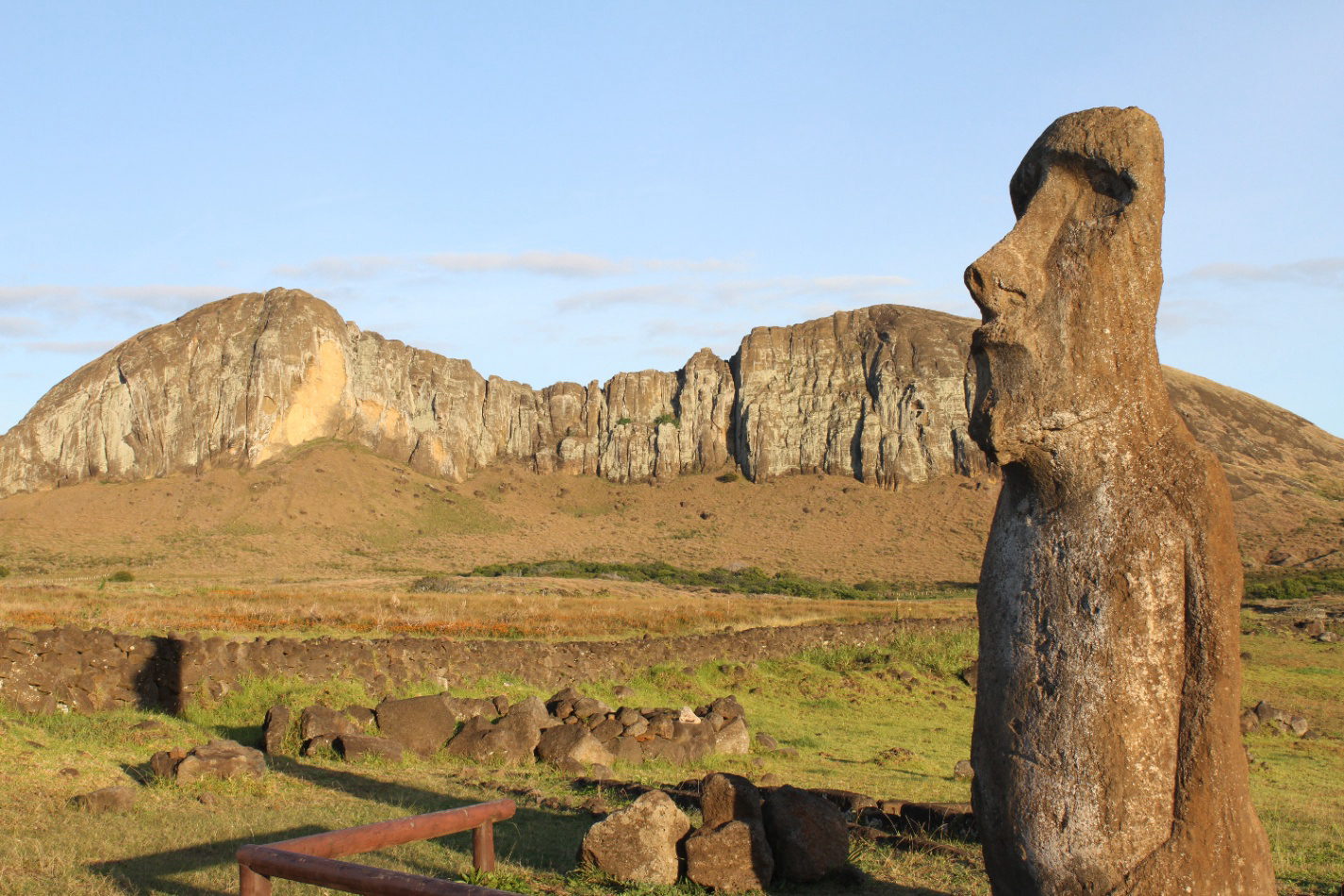
Image Credit: unsplash.com
The Moai sculptures reveal that their actual creators were ace craftsmen and engineers and are unique among other stone models found in Polynesian cultures. But it is said that the Polynesians migrated on Easter Island after being destroyed due to some uncertain events. A tribe of Polynesians rowed their wooden yachts across immense spans of the ocean and migrated to Easter Island. All of this happened hundreds of years ago but the initial endeavour of migration of an entire community and ocean voyaging is remarkable in itself. And why these people left their actual native land remains as a mystery. But what is clear is that they made this small, uninhabited island their new home, eventually naming it Rapa Nui, now known as Easter Island. The date of the Polynesians arrival on the island and why their civilization eventually fell down is still being debated.
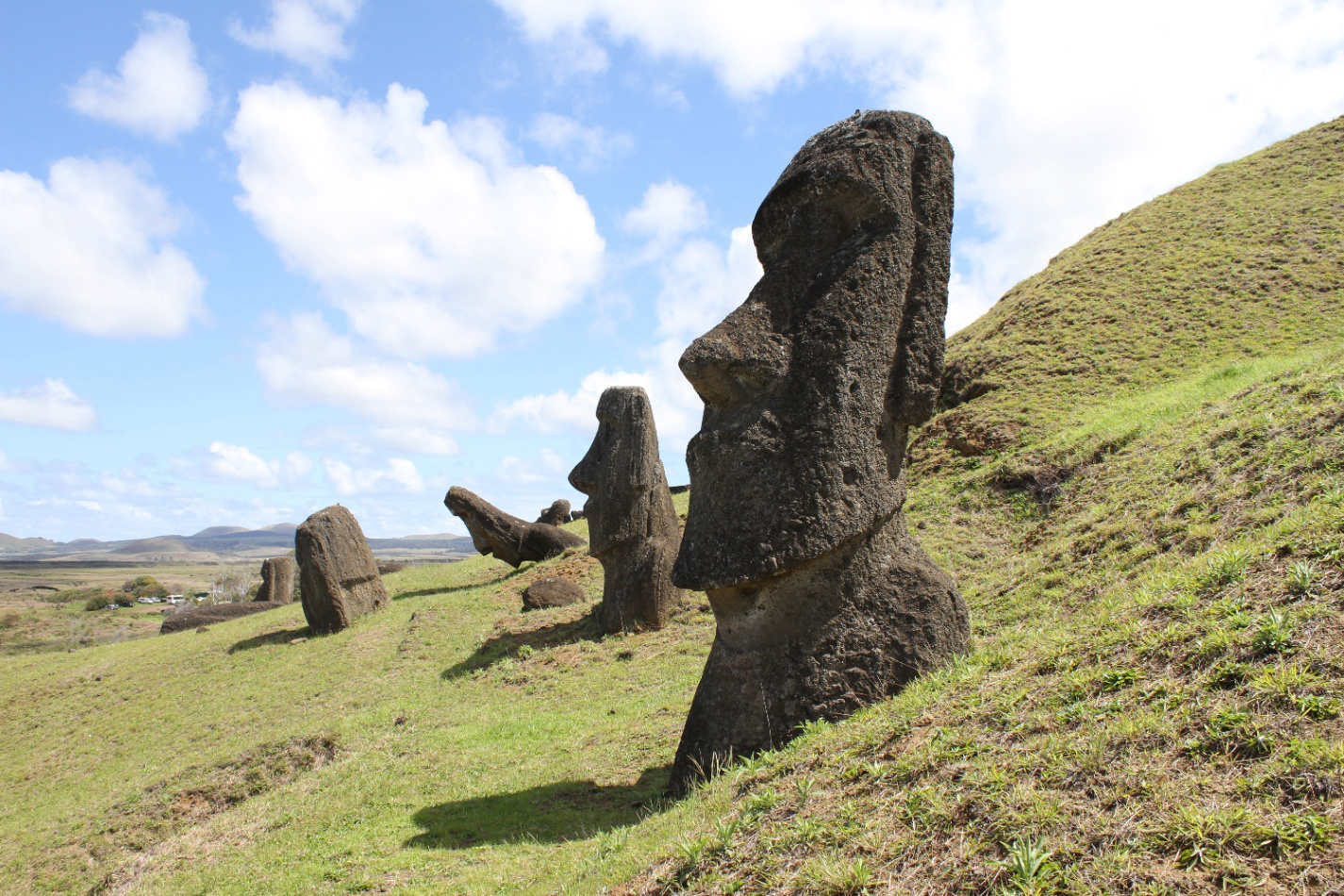
Image Credit: unsplash.com
We may never find a definite answer to when the Polynesians inhabited the island, why the civilization fell down so quickly and what is the actual purpose of those gigantic sculptures. Whether another intrusive species did all this or we humans destroyed the actual proofs, Easter Island still remains as an exemplary beautiful adventure for the world.
(source - en.wikipedia.org)
